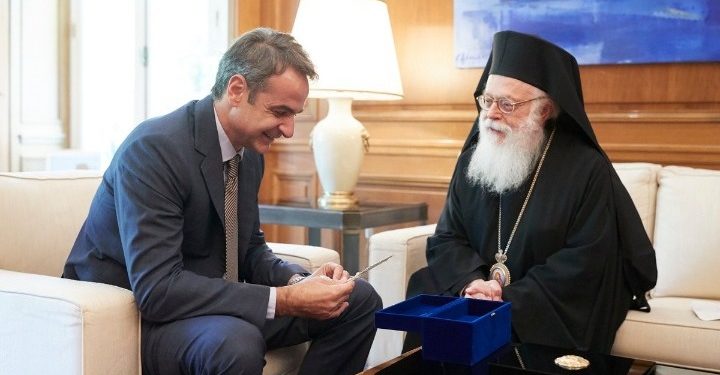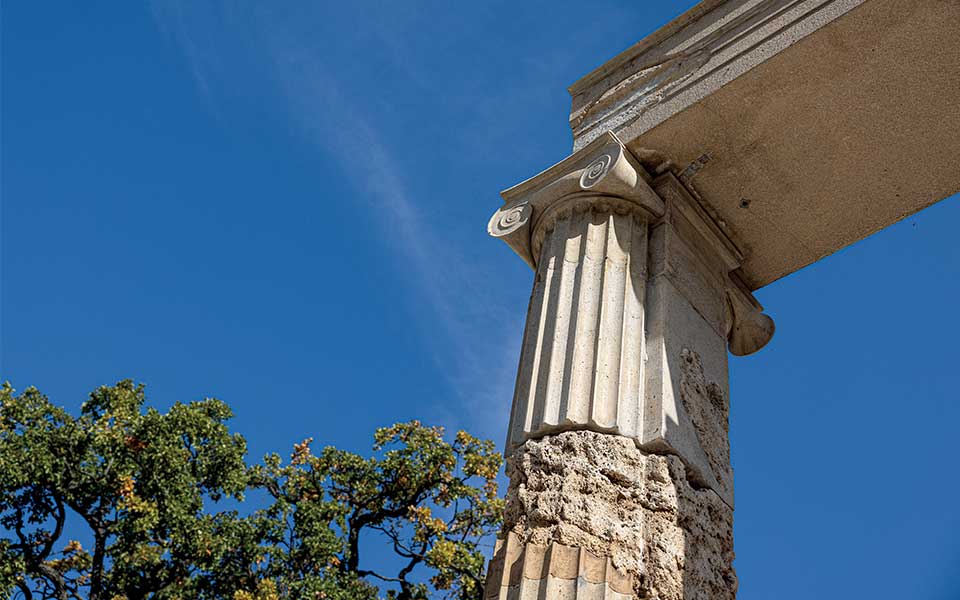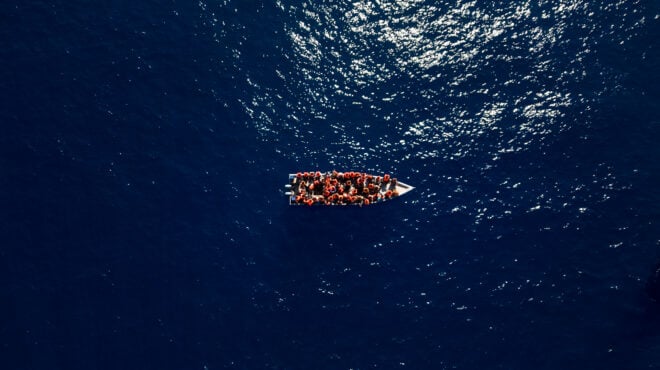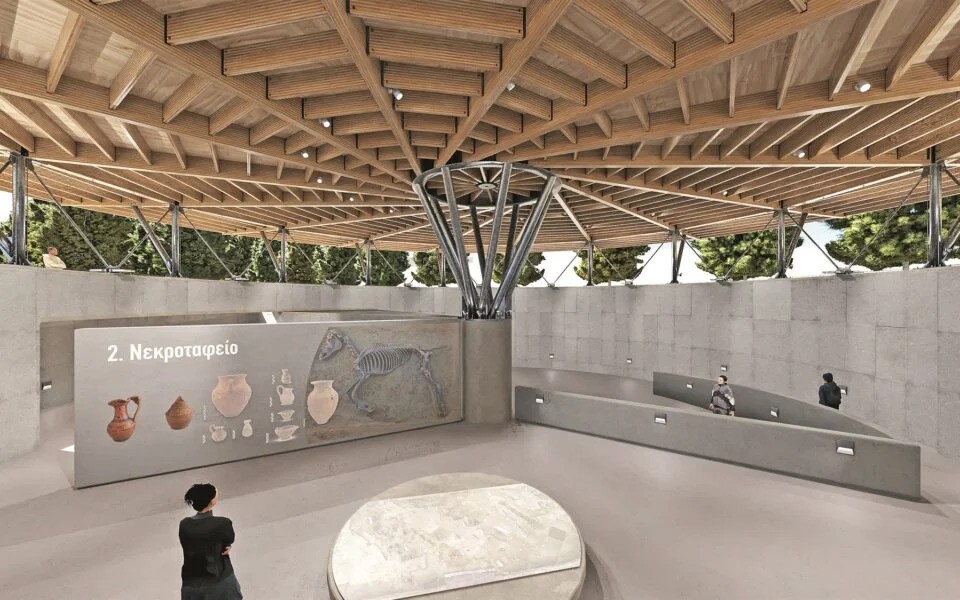The Fine Art of the Doulamas
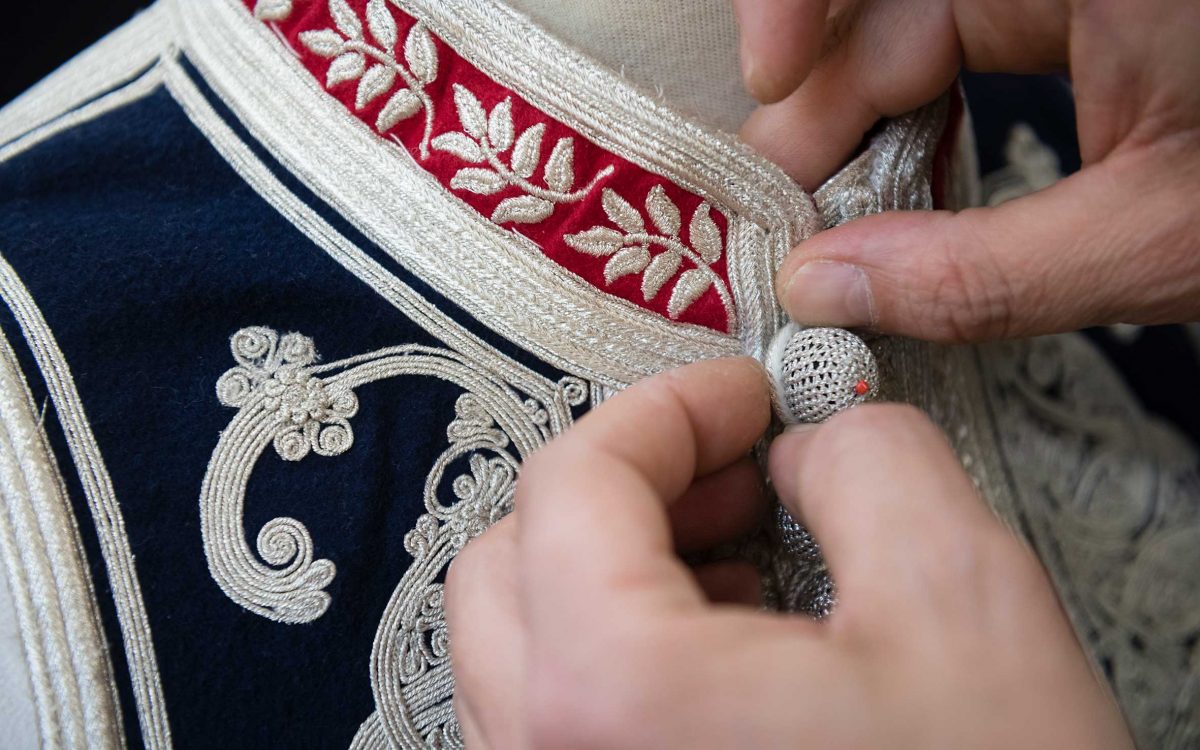

An acclaimed expert of traditional Greek garments, Aristidis Tzonevrakis seeks to marry the philosophy of traditional outfits with the stylish present.
A dark blue, urban style doulamas dominates this Argos workshop. Its base is woolen, like felt, and its embroidery is crafted with twisted, silver metallic thread. A formal military outfit of a bygone era, this imposing garment took eight months to create. “But I didn’t work on it every day,” its creator, Aristidis Tzonevrakis, explains.
Under Ottoman rule, the tailors of the time travelled with their assistants, sewing made-to-measure orders. Often they lived in the homes of their clients, until they completed their work. The embroidery on each garment indicated the wealth of their clients.
The first motif that Tzonevrakis ever attempted, just 5 centimeters long, took him an entire day to complete. Today, his steady hand guides the fabric and thread with great skill and precision. This is why Tzonevrakis is considered a modern exponent of an old tailoring art.
It is early afternoon, and the center of Argos is quiet. In the high-ceilinged workshop, the sewing machines, a loom, steam presses, books, fabric and thread form a ceaseless production line. Here at Aristotechnima – Tzonevrakis’ brand – the doors are open every day of the week.
By Tzonevrakis’ side, his wife Kyriakoula and his sister Alexandra form the basic team. The crew also includes his mother and aunt, but their daily presence has been“suspended” due to the pandemic.
“I’m at the workshop all day, from morning to late at night. There’s no social life, not even before the pandemic,” he says, as he adds a little more golden thread to a black sigouni (a thick, woolen coat worn mainly by women). “But, I have grown to love all of this; I wanted to learn everything, improve my technique so that it becomes unique, so that it has character.”
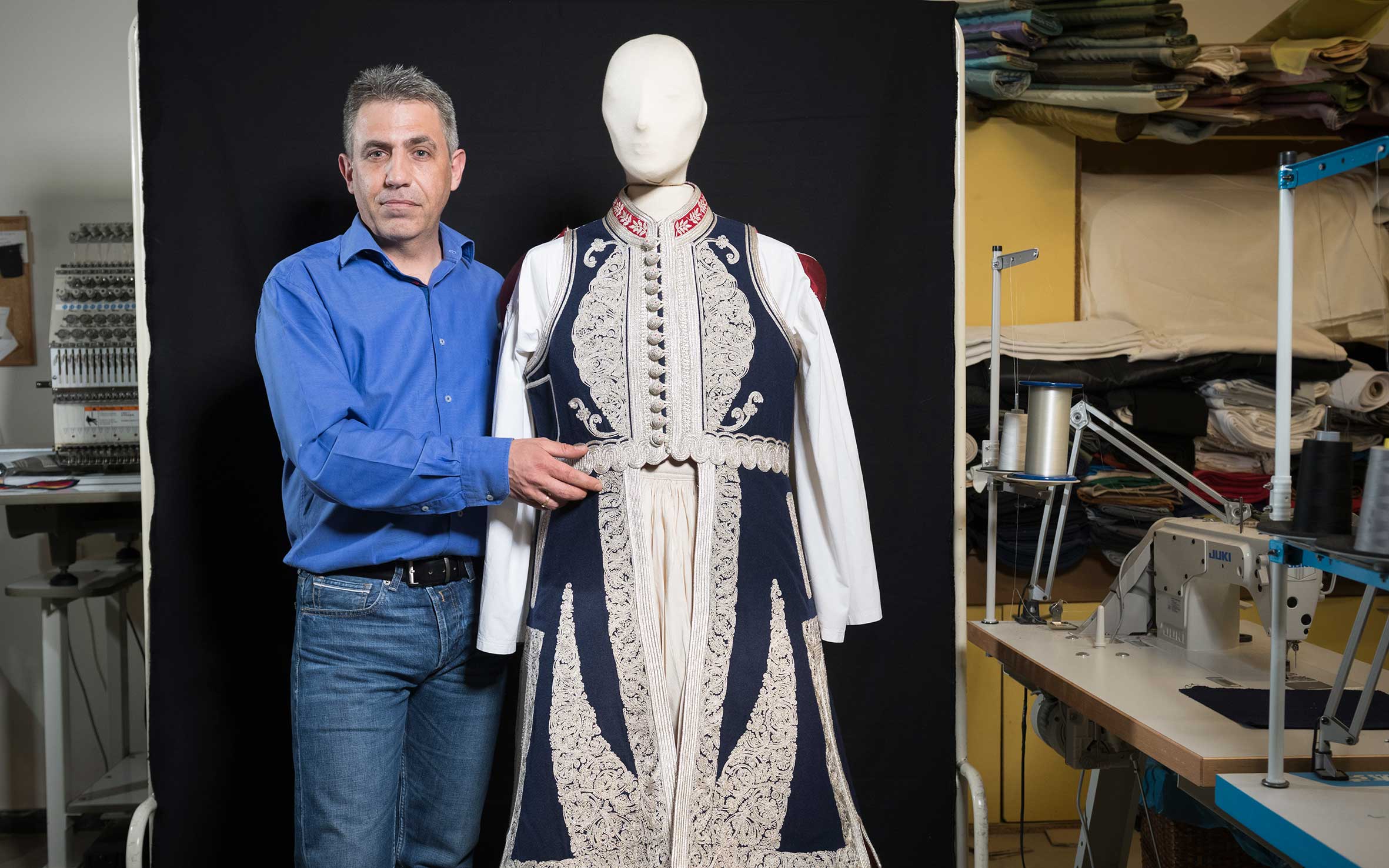

A “doulamas with a twist”
A “Greek tailor,” the opposite of a Frankish tailor, a distinction that came with the arrival of Queen Olga in 1867 and the introduction of western techniques, infrastructure and teachers who trained Greek women to create western-style clothing, and an expert in local Greek traditional garments, Tzonevrakis believes creativity can be seen in many different forms.
Recently, his already well-recognized work in the industry was in the limelight when Gianna Angelopoulou, President of the Greece 2021 Committee, wore one of his creations at the celebrations of the 25 March national holiday. This particular, bespoke garment was inspired by the dark blue doulamas, embroidered with silver thread.
“It was a doulamas with a twist, a modern elegant overcoat,” Tzonevrakis notes. “Mrs Angelopoulou had the idea to show that we also create and produce fashion in Greece that originates in the past, but can also have modern usage. And she gave me a lot of guidance as we worked towards the final result. It was the job of a lifetime.”
The exploration of the roots and creation of a garment and then translating this to the present day lies at the heart of Tzonevrakis’ work. Copies of old local traditional garments are worked on, techniques and skills are improved upon, always preserving the high standards of their heritage. At the same time, Aristotechnima collaborates with local institutions and companies.
These days Tzonevrakis is working on a series of embroidery that will feature in a summer collection by Zeus+Dione while he is also embarking on a new collaboration with Ancient Greek Sandals.
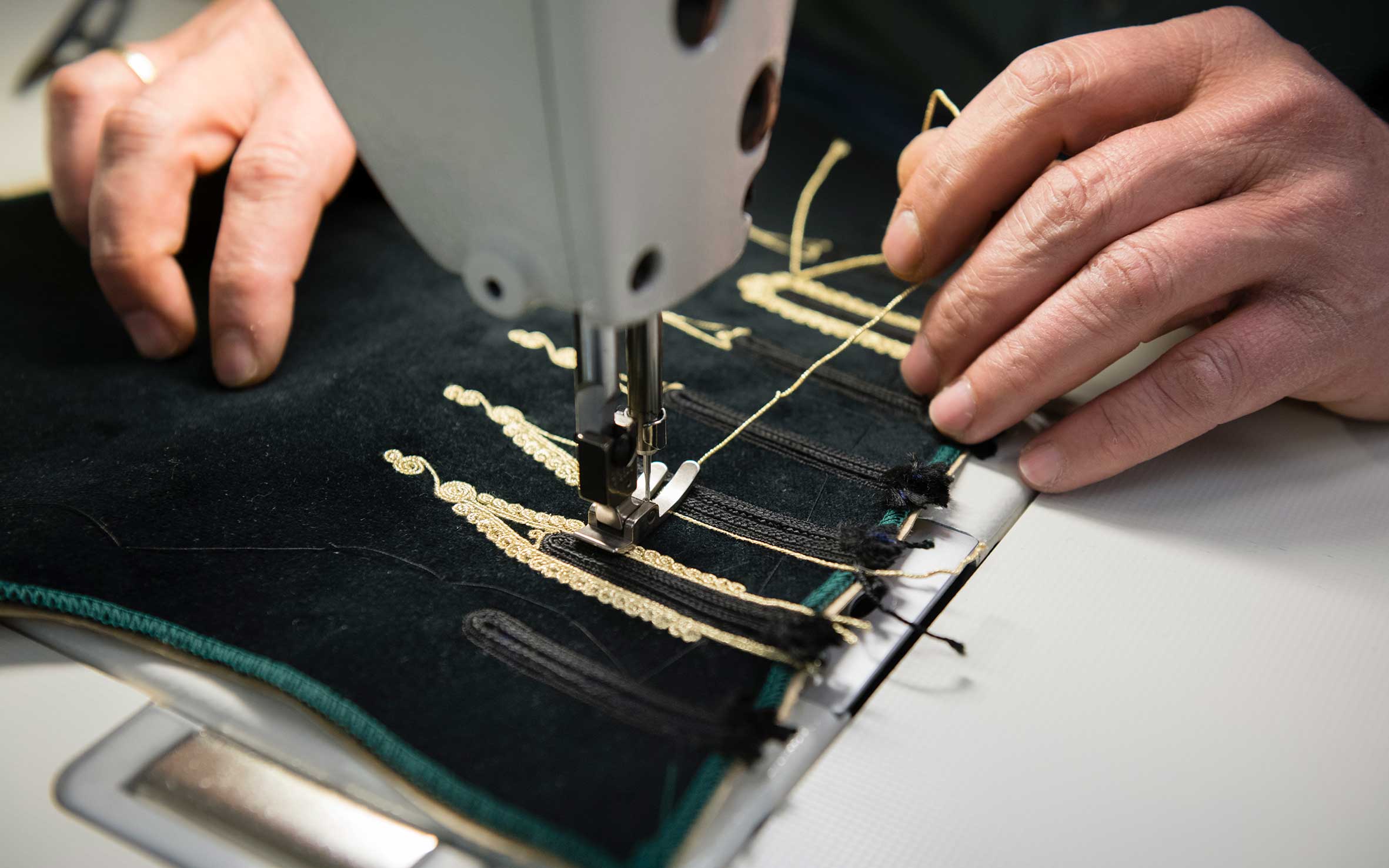

A vocation of great depth
Tzonevrakis’ involvement with the field came about by chance. His initial plans included studies in engineering, but he dropped out. Just before starting his military service, he met the person who would change his life course – Kostas Gikas, a bank employee, a traditional dancer and artist who was in charge of the stage wardrobe of the Peloponnesian Folklore Foundation. The PFF, the life’s work of the innovative scenographer-costume designer and fashion historian Ioanna Papantoniou, was founded in Nafplio in 1974.
When Tzonevrakis completed his military obligations, he ran into Gikas by chance again, who informed him of an assistant position opening up at the PFF stage wardrobe section.
“I did not miss out on this opportunity, because I saw that this vocation had great depth, there was so much to learn. It piqued my interest. It is the sense that we have to create something identical, as is, otherwise it may be lost, altered or even non-existent,” he says.
In 2002 Tzonevrakis met Papantoniou herself, a person who has also greatly influenced his life. From her part, one of the terms of giving him the job involved him learning the theory behind the garments. Thus, Tzonevrakis got involved with the philosophy of traditional garments, the development from ancient times, the basic male and female costumes and their geographical origin.
“I did not want to be a ‘parachutist’ in this job. And I pursued it – this was more than survival, I actually wanted to adopt this line of work,” he adds.
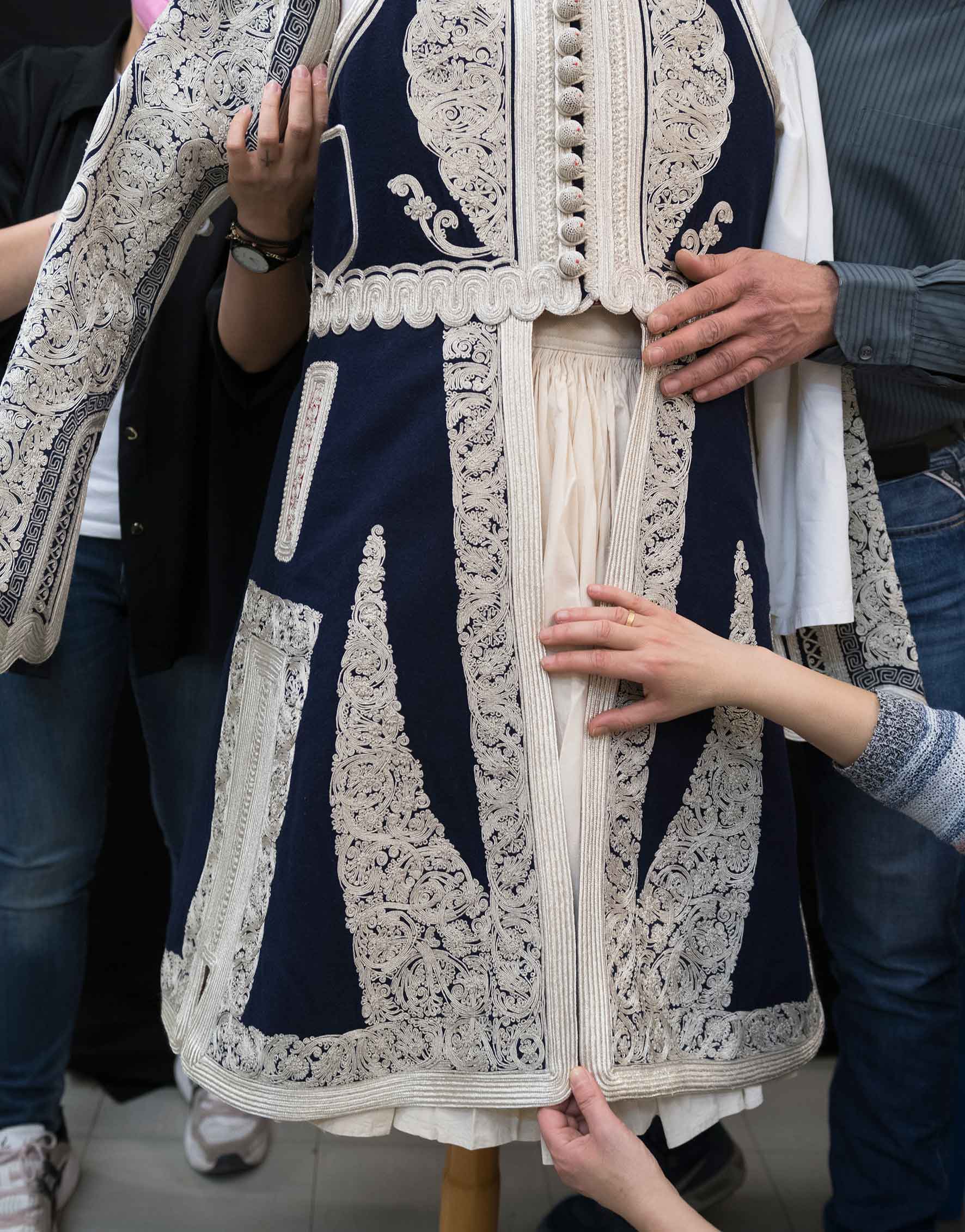

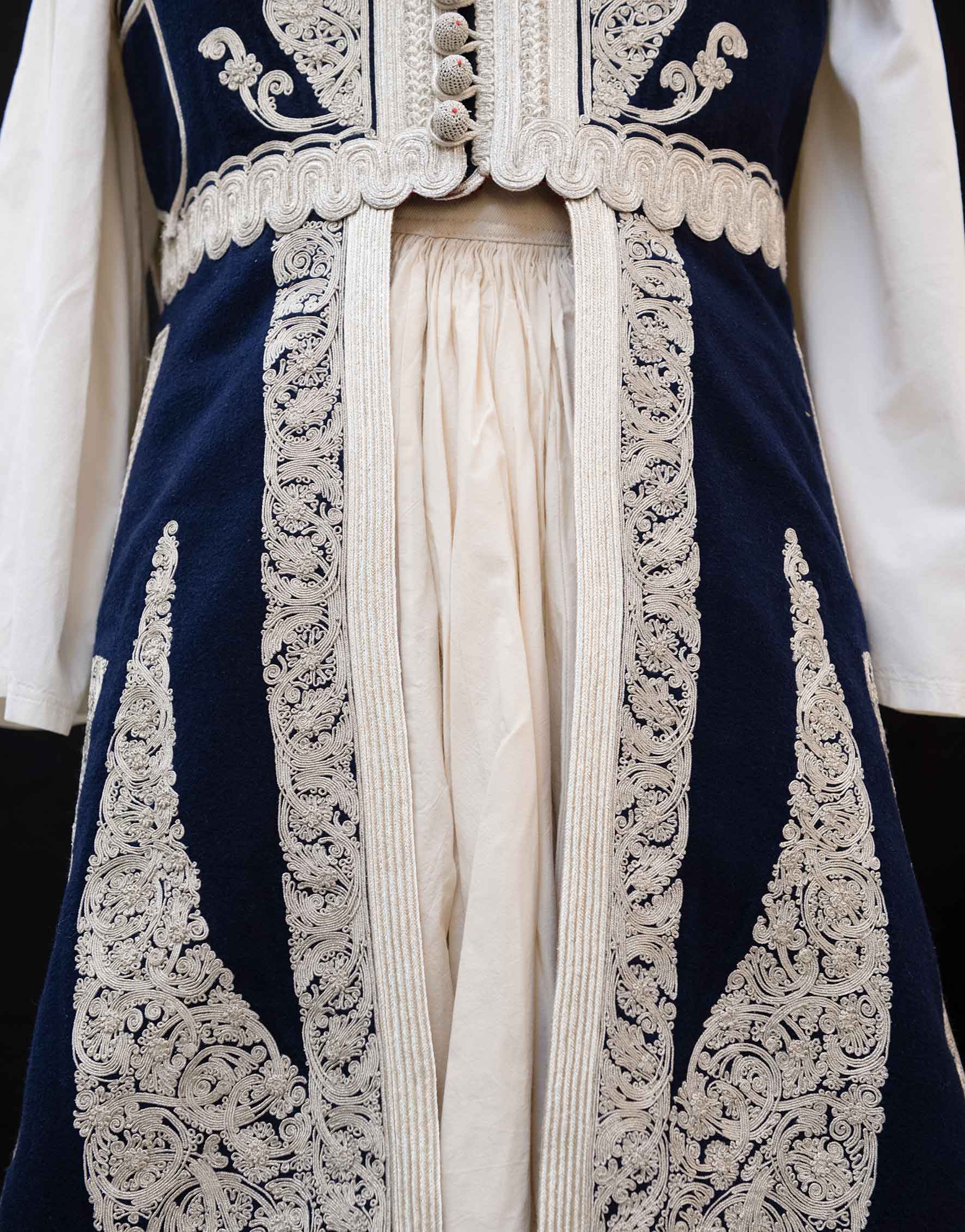

How it all began
The following years passed with the up-and-coming tailor learning his art from his mentor, Gikas. In 2006, some changes at the PFF led to Papantoniou offering Tzonevrakis responsibility not only for the stage wardrobe, but also the equipment. For him, this gave him the opportunity to start his own business – Aristotechnima – in Argos.
His early clientele was composed of associations and traditional dance groups. At the same time, he shared the passion for fashion history and heritage with his teacher, while also wanting to make connections to today.
He began working on theatre costumes, some wedding dresses, while certain clients who possessed guns that dated from the Revolution of 1821 wanted to complete their collection with the appropriate garments. At some point, a descendent of Theodore Kolokotronis, hailing from the general’s maternal line, brought an authentic vest from Arkadia.
“This piece made me think that I had to develop my embroidery patterns and make them more complex, more beautiful,” he says. “I thought we needed to improve these skills, because until that point the garments were somewhat simplified. Their quality was akin to that of a costume, rather than a garment.”
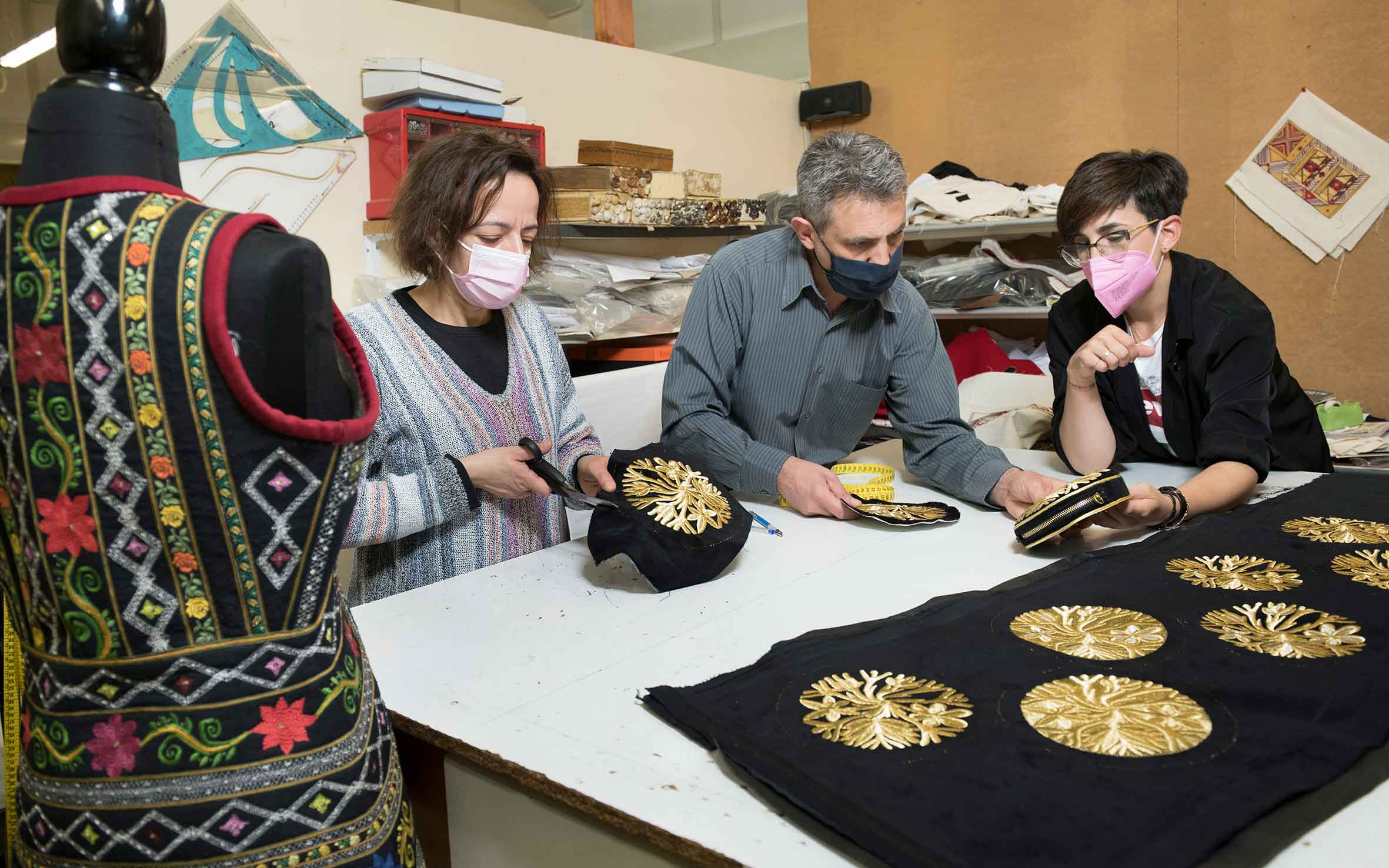

It was during this time that he also began taking classical guitar lessons. Being left-handed, Tzonevrakis wanted to strengthen his right hand.
At the same time, he began the challenging effort to self-fund his business, taking out personal loans at a time that was “prohibitive for entrepreneurship,” as he says. The economic crisis led to accumulated debt and just the thought of the future brought with it an aura of pessimism.
In 2013, a visit brought new hope. It was when the founders of Zeus+Dione, Mareva Grabowski and Dimitra Kolotoura, and their team were exploring the country in search of artisans and creators with which to collaborate, their vision being a wider revival of the heritage of Greek costumes. In Argos, Aristotechnima offered a beautiful narrative.
According to Tzonevrakis, his collaboration with Lydia Vousvouni, Zeus+Dione designer, encouraged him to “unlock” his creative path in the way he marries tradition with the stylish present.
Today, this path continues with the fashion house’s new creative director, Mario Schwab.
“There is a modern approach to the techniques of the Greek tailors. An abstract mood with the logic of the Greek tailors, such as sleeve finishes with geometric patterns, in turn embellished with old embroidery,” he explains.
At the Benaki Museum in 2019, Tzonevrakis and Aristotechnima revealed another creative aspect by developing a collection of white garments for the PFF exhibition, “Doulamas the Magnificent.”
Organized by Ioanna Papantoniou and her colleagues, the exhibition aimed to highlight the traditional (from the Ottoman period) and more recent versions of this specific overcoat – the doulamas for men, and the pirpiri for women – in the western Balkans.
Based on one of Papantoniou’s ideas, Tzonevrakis made nine pieces from the sewing pattern of the doulamas; essentially an x-ray of the garment, with simple fabric, unembellished. For the past few months, a copy of the outfit worn by Pavlos Melas created by Tzonevrakis can be found in the Macedonian fighter’s renovated residence and museum in Kifissia.
Furthermore, he often travels abroad for work.
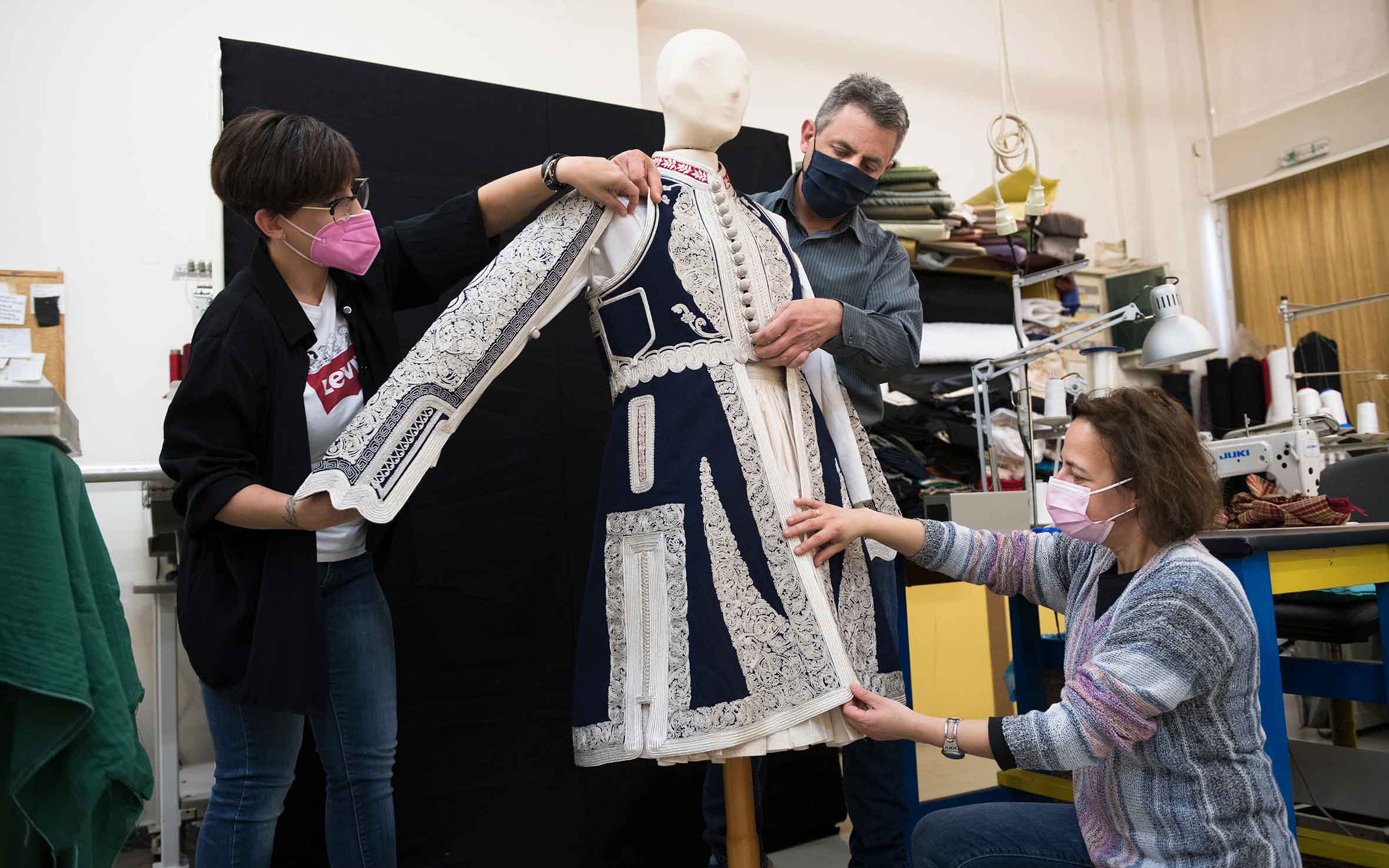

Looking to the future
Back in Argos, Tzonevrakis continues his personal quest to improve skills and techniques, such as hems and finishes. There are many thoughts on how to develop the brand, greater production potential and to create a physical store. If he ever gets the time, he would like to study the western outfits of the Middle Ages, in order to better understand the eastern garments.
At the same time, Aristotechnima remains a family affair, at least for the time being.
“The young people who join the industry today want to be fashion designers; but to become a designer, you need to learn about the rest. Most want to earn a specific salary. But that needs to be worked towards,” he says. “My vision is to have a school that, at heart, teaches embroidery because no machine can ever replace that. I would like to help train embroiderers, tailors and seamstresses, people who could be absorbed in a production line. Of course, that would take considerable funding.”
Just before our evening return trip to Athens, Tzonevrakis places some bags on the bench. A tote, with embroidery from an Argolida shirt, and a small round one decorated with motifs from Lefkada. The bags are a result of an exclusive collaboration with the PFF.
Here in Argos, art is being kept alive thanks to a great investment of time and effort, to a free way of thinking that insists on the excellence of tradition but also on its new potential.
“This type of art is not just for museums, but also for our everyday life,” says Tzonevrakis, a modern tailor of the traditional Greek style. “It needs to develop and become more outward-looking.”
Source: greece-is.com

